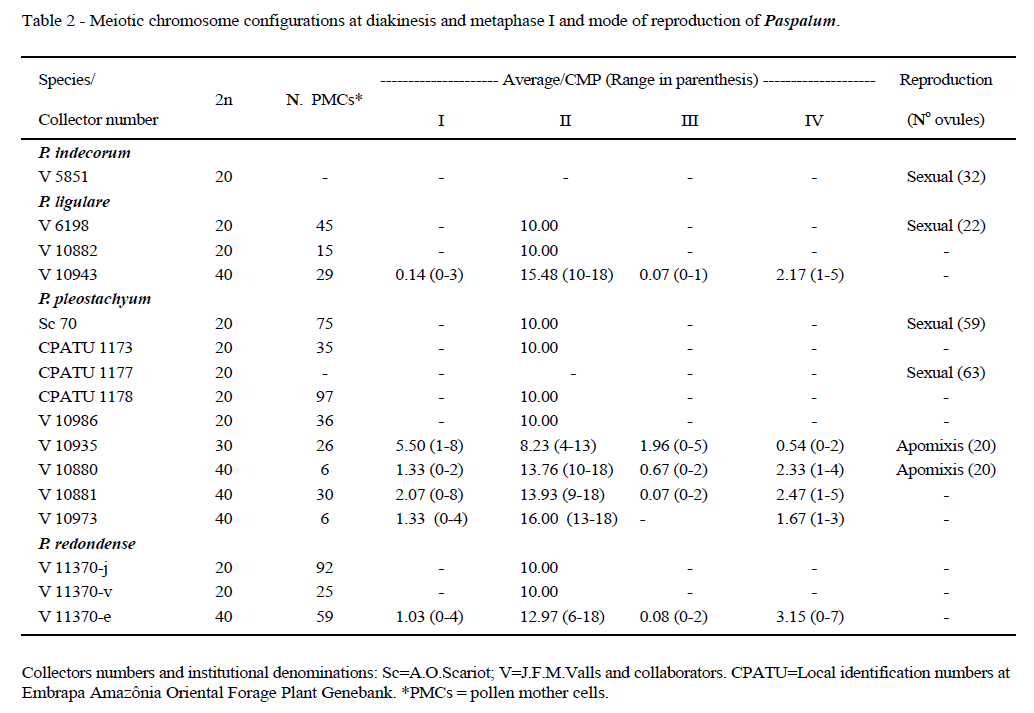Somatic chromosome numbers are reported for thirty four germplasm accessions of Paspalum, Caespitosa group, representing five different species. All five species have shown x=10 as the basic chromosome number. The diploid 2n=20 chromosome number was confirmed for P. chacoense and P. indecorum, as well as sexuality for the latter. This is the first report of the chromosome number and cytological behavior for P. ligulare (2n=20 and 40), P. pleostachyum (2n=20, 30 and 40) and P. redondense (2n=20 and 40). The present results document regular meiosis in diploid accessions, with primarily bivalent pairing at diakinesis and metaphase I. Polyploids of these species had irregular meiosis, with univalent, trivalent, and quadrivalent chromosome associations. Diploid accessions of P. pleostachyum and P. ligulare have shown a single meiotic embryo-sac, indicating sexual reproduction, while the triploid and one of the tetraploid accessions of P. pleostachyum have shown aposporic embryo-sacs of nucelar origin, and a few meiotic sacs, suggesting facultative apomixis. Identification of the new diploid accessions may prove useful for phylogenetic studies of Paspalum, as well as for breeding programs focusing on the forage potential of species of the Caespitosa group.
mode of reproduction; ploidy level



